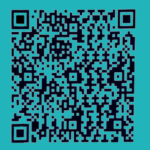Sleep apnea is a condition that occurs when a person regularly stops breathing for 10 seconds or longer during sleep. It is a form of sleep-disordered breathing (SDB). The most common symptoms associated with sleep apnea include loud snoring, gasping or choking episodes during sleep, excessive daytime sleepiness (falling asleep in work ), morning headache, and cognitive impairment related to fatigue from lack of sleep. There are three types of sleep apnea: obstructive, central, and mixed. Obstructive sleep apnea (OSA) is the most common type, it is caused by a blockage of the airway, usually when the soft tissue in the rear of the throat collapses and closes during sleep. In central sleep apnea, the airway is not blocked but the brain fails to command the muscles to breathe. Mixed apnea is a combination of the two. With each apnea event, the brain briefly arouses people to resume breathing, but consequently sleep is interrupted and of poor quality.
Continuous Positive Airway Pressure (CPAP) is the most reliably effective treatment for patients with moderate to severe OSA. CPAP systems consist of a blower, air tubing, and a mask. The blower generates airflow and pushes it through the tubing and nasal mask. The air passes through your nose and into your throat, where the slight pressure keeps your upper airway open. The low air pressure does not interfere with breathing ¡V though some people need a few nights to get used to the sensation of positive airflow.
Successful CPAP users report feeling improvements in
Breathing becomes regular and snoring stops
Vitality and motivation is restored
Job performance is improved
Mood is improved
Risk for high blood pressure, heart disease, heart attack, stroke, and vehicular or work-related accidents is reduced.
Quality of life is improved
BiPAP therapy delivers two different levels of positive air pressure: inspiratory positive airway pressure (IPAP), a higher level of pressure when you inhale; and expiratory positive airway pressure(EPAP), a lower level of pressure when you exhale. Physicians typically prescribe bipap therapy to treat several different conditions, including nocturnal hypoventilation, respiratory insufficiency, neuromuscular disease, respiratory failure, chest wall deformity, chronic obstructive pulmonary disease (COPD), and obstructive sleep apnea (OSA).
Although BiPAP and CPAP therapy are both forms of positive airway pressure, BiPAP is usually considered a kind of ventilation which delivers “assisted breaths,” not continuous pressure, therefore, physicians prescribe Bi-PAP for many types of Sleep Disordered Breathing whereas physicians usually prescribe CPAP for OSA.
BiPAP is not typically prescribed for OSA patients; however, OSA patients who require high treatment pressures or have another respiratory condition are often potential users of bipap. BiPAP devices can be considered in patients who are intolerant of the pressure sensation of CPAP.
Before you start CPAP therapy, you need a titration to adjusting adjust a suitable pressure to prevent apneas, hypopneas and snoring for you. Conventionally, titration process means takings several hours sleep in a sleep lab. It is a detailed process involving a skilled technician to adjust the pressure to meet change in body position and sleep stage and to intervene for mask leaks after airway patency is restored.
Auto-titating CPAP(ACPAP) devices are designed to increase pressure as needed to maintain airway patency and then to decrease pressure if no events are detected over a period of time, by monitoring for signs of apneas, hypopneas, flow limitation, and snoring. Therefore, ACPAP can be used to determine a fixed CPAP pressure level, and it is assumed that ACPAP could enhance acceptance and adherence with chronic positive pressure treatment.
Humidifiers relieve nasal irritation and dryness that can result from constant airflow, especially high treatment pressures, by supplying the required humidity to the nose. It can effectively enhance users comfort and compliance to the treatment.
A sleep test, called polysomnography is usually done to diagnose sleep apnea. There are two kinds of polysomnograms. An overnight polysomnography test involves monitoring brain waves, muscle tension, eye movement, respiration, oxygen level in the blood and audio monitoring. (for snoring, gasping, etc.) The second kind of polysomnography test is a home monitoring test. A Sleep Technologist hooks you up to all the electrodes and instructs you on how to record your sleep with a computerized polysomnograph that you take home and return in the morning. They are painless tests that are usually covered by insurance.
Apnea is defined as a cessation of airflow for at least 10 seconds. Hypopnea is defined as an abnormal respiratory event lasting as least 10 seconds with at least a 30% reduction in thoracoabdominal movement or airflow as compared to baseline, and with a 4% oxygen desaturation.
The apnea-hypopnea index (AHI) or respiratory disturbance index (RDI) refers to the total number of apneas and hypopneas divided by the total sleep hours in a patient’s sleep study. The AHI gives one measure of the severity of the sleep apnea, AHI 5-15 is considered as mild OSA, 15-30 is moderate, and over 30 is severe.
Sleep apnea is a very common disorder affecting 2% to 4% of the adult population, it is reported that approximately 12 million people have sleep apnea in the Unite States. However, awareness is low with only around 10% of sufferers being diagnosed and treated. Risk factors include being male, overweight, and over the age of forty, but sleep apnea can strike anyone at any age, even children. This serious disorder can have significant consequences, such as headaches, memory problems, depression, high blood pressure and other cardiovascular disease. Moreover, untreated sleep apnea may be responsible for job impairment and motor vehicle crashes. Fortunately, sleep apnea can be diagnosed and treated. For now, CPAP (Continuous Positive Airway Pressure) is considered the most effective treatment for OSA.
Maintenance of a comfortable and leak free interface in patients who are receiving CPAP therapy is very important. Thus, while seeking a comfortable mask, ask following questions:
Yes, patient does need a prescription when ordering a CPAP machine from anyone, according to the law. However, accessories (masks, nasal pillows, humidifiers, etc) can be sold without a prescription.



